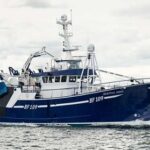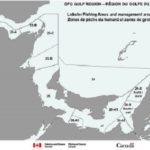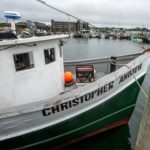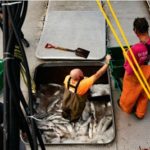Tag Archives: NTSB
Flooded Engine Room Caused Fishing Vessel to Sink
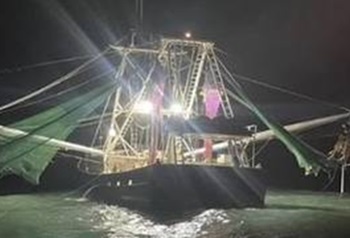 Uncontrolled flooding through a hole in the plating beneath the engine room of a fishing vessel led to its sinking in the Gulf of Mexico, the National Transportation Safety Board (NTSB) said Thursday. The commercial fishing vessel Captain Alex was fishing offshore of Galveston, Texas on Nov. 25, 2022, when the vessel began flooding. The four crewmembers on board were unable to stem the flooding and evacuated to a responding U.S. Coast Guard boat. The sinking resulted in an oil sheen and debris field; a reported 17,000 gallons of diesel fuel were on board. There were no injuries. The Captain Alex was a total loss valued at $500,000. more, >>click to read<< 14:50
Uncontrolled flooding through a hole in the plating beneath the engine room of a fishing vessel led to its sinking in the Gulf of Mexico, the National Transportation Safety Board (NTSB) said Thursday. The commercial fishing vessel Captain Alex was fishing offshore of Galveston, Texas on Nov. 25, 2022, when the vessel began flooding. The four crewmembers on board were unable to stem the flooding and evacuated to a responding U.S. Coast Guard boat. The sinking resulted in an oil sheen and debris field; a reported 17,000 gallons of diesel fuel were on board. There were no injuries. The Captain Alex was a total loss valued at $500,000. more, >>click to read<< 14:50

Submerged Rock Led to Fishing Vessel Grounding
A captain’s decision to navigate close to shore in an area with uncharted rocks led to the grounding and capsizing of a fishing vessel in Alaska last year, the National Transportation Safety Board (NTSB) said. The Challenger struck a submerged rock while fishing for salmon along the shore of Kodiak Island, Alaska on August 7, 2022. The vessel began taking on more water than the onboard pumps could handle. The captain and three crewmembers abandoned ship and were rescued by a nearby Good Samaritan fishing vessel, and the vessel capsized soon after. Another Good Samaritan vessel towed the fishing vessel to Larsen Bay. No injuries were reported. The Challenger was declared a total loss, with damages exceeding $600,000. >>click to read<< 10:51
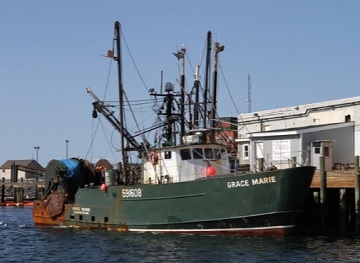
Failure of Doubler-Plated Hull Likely Cause of Sinking of Fishing Vessel
The failure of the doubler-plated hull under the engine room likely caused the flooding and sinking of a fishing vessel near Gloucester, Massachusetts last year, the National Transportation Safety Board said Tuesday. The fishing vessel Grace Marie was transiting to fishing grounds on July 8, 2022, when the engine room began flooding. The seven-person crew was unable to remove the water with the vessel’s bilge pumping system. The crew abandoned the vessel in a life raft and was rescued by a Good Samaritan vessel. The vessel eventually sank and was a total loss valued at $650,000. No injuries were reported. >click to read< 16:00

NTSB Reiterates Call for Mandatory Personal Locator Beacons Following Investigation Into F/V Emmy Rose Sinking
The U.S. National Transportation Safety Board is reiterating calls for a personal locator beacon requirement following its investigation into the 2020 sinking of the F/V Emmy Rose that claimed the lives of four crew members off of Cape Cod. NTSB also reiterated an earlier safety recommendation to the Coast Guard to require all vessel personnel be provided with a personal locator beacon (PLB). NTSB issued that recommendation following the sinking of the cargo vessel El Faro in 2015 in which all 33 crewmembers perished. NTSB also reiterated the recommendation after the fishing vessel F/V Scandies Rose sank off Sutwik Island, Alaska, in 2019. Two of the vessel’s crewmembers were rescued; the other five were never found. >click to read< 10:37
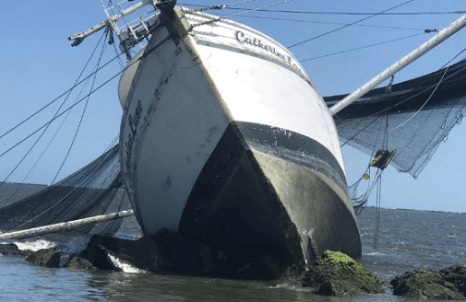
Faulty Autopilot, Empty Wheelhouse Led to Grounding off Georgia
A captain’s decision to turn on a recently-repaired autopilot and then leave the wheelhouse led to the grounding and sinking of a fishing vessel off Cumberland Island, Georgia, according to the NTSB. On June 7, two days before the casualty, the captain of the shrimp trawler F/V Sage Catherine Lane found that he couldn’t turn off the autopilot, and he had to unplug it to get back manual control. He tried to troubleshoot the issue,,, On June 9, 2021, the vessel was transiting outbound on the St. Marys River, making nine knots. The captain, who had 30 years of experience in commercial fishing. set the vessel’s autopilot, then answered a phone call and went below to his stateroom. >click to read< 18:25
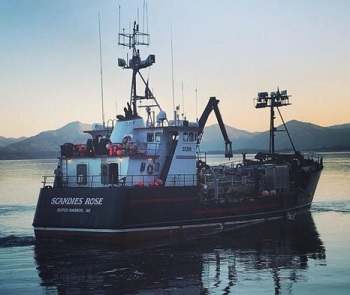
F/V Scandies Rose: U.S. Coast Guard and NTSB conclude formal public hearing proceedings of the tragedy
The joint investigation board reviewed and considered evidence related to the loss of the fishing vessel, which occurred on Dec. 31, 2019. The board heard from 43 witnesses, who provided testimony into the conditions influencing the vessel prior to and at the time of the casualty. Testimony also focused on weather, icing, training fisheries, the Scandies Rose’s material condition, owner and operator organizational structures and culture, the regulatory compliance record of the vessel, Coast Guard policy, and practices related to vessel design, engineering and inspections.,,, Recordings of the proceedings are available,,, Documents, exhibits, helpful videos, Board biographies, and other hearing information is available >click to read< 15:43

F/V Scandies Rose: Coast Guard board, NTSB, to investigate sinking of crab boat on New Year’s Eve
The Coast Guard has formed a Marine Board of Investigation to determine the causes of the sinking of the Scandies Rose,,, The board was formed earlier this week, and it is still unclear where and when a hearing will be scheduled, according to Chief Petty Officer Matthew Schofield, a public affairs officer with the 17th Coast Guard District in Juneau. The National Transportation Safety Board (NTSB) also is investigating, >click to read< 10:49
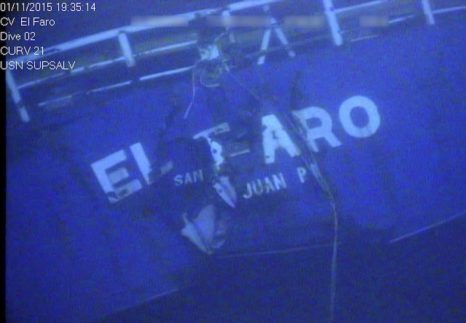
NTSB Breaks Down El Faro Findings in Must-Read Illustrated Digest
The National Transportation Safety Board has released 16-page illustrated digest summarizing in detail the critical events and decisions that led to the October 1, 2015 sinking of the American cargo ship El Faro with the loss of all 33 crew members. The digest also synopsizes the more than 60 recommendations issued throughout the NTSB’s investigation of the sinking. In its final report into the disaster, the NTSB said the Captain’s decisions and TOTE’s poor oversight and inadequate safety management system led to the sinking, the deadliest shipping disaster involving a U.S. flagged vessel in more than 30 years >click to read<17:58

































